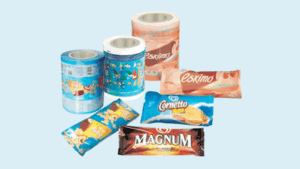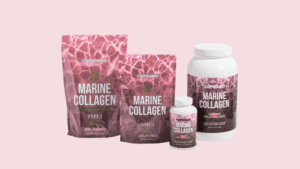Last Updated on March 27, 2025 by Packoi Team
In the past, plastic bags were the norm. However, since people found out about the devastating effects of plastic on the environment, customers have begun to call for more paper bags to be used in stores.
As a result, business owners have started changing their packaging to use kraft or brown paper materials.
If you want to apply the same change, keep reading. This article will educate you on what you need to consider if you want to start using paper bags instead of plastic.
4 Types of Paper Used for Grocery Bags
Although brown paper grocery bags are commonly used, there are other materials that you can opt to use.
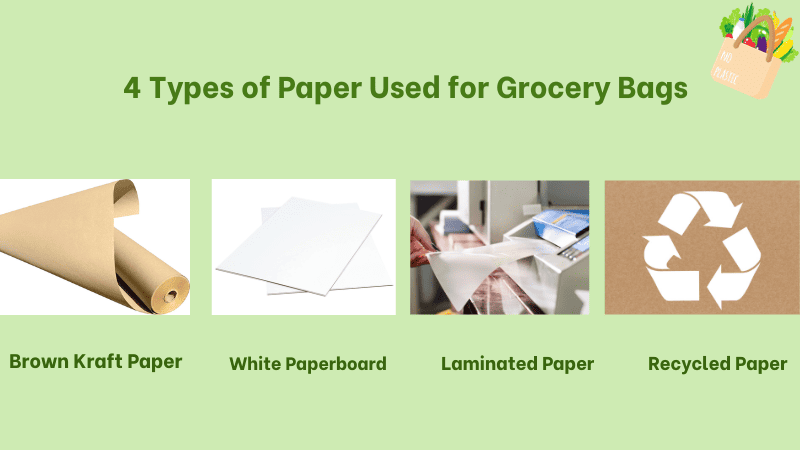
The material you choose will influence the strength of the paper grocery bags. After all, customers buy goods at grocery stores in different quantities. You need to use a material that’s strong enough to carry a few items and a full load.
Brown paper bags aren’t the only material that you can use to make this happen. There are 4 paper grocery bags that you can choose from.
1. Brown Kraft Paper
Since this is the most common, consider using brown kraft paper bags as your top option. This is characterized by the color of the grocery bag. It’s not just one shade of brown. It could be light brown or yellowish brown.
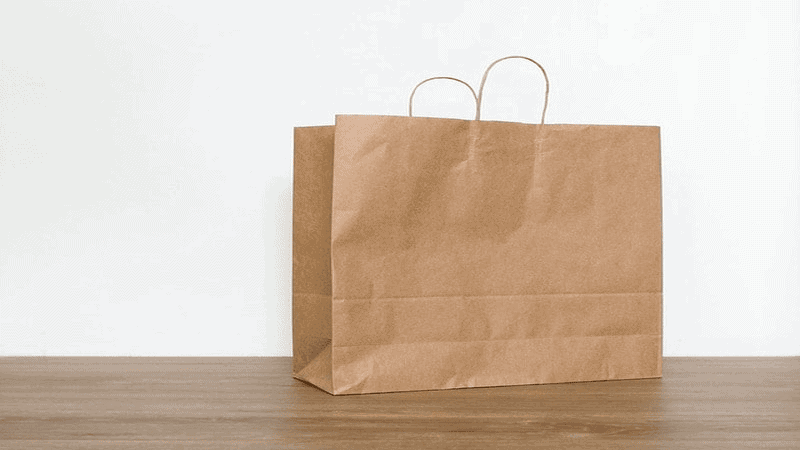
This material is made of kraft paper, a natural paper made from wood pulp that’s processed to look like sheets. These are then cut, folded, and glued into kraft paper bags.
Kraft paper is usually 80 to 120 grams with a high tensile force.
This paper bag is an excellent option because it’s reusable. As a material, kraft paper is 100% recyclable. But before it gets sent to the recycling facility, some people use it for arts and crafts. With the right instructions, it can be transformed into something else that can be used around the house.
2. White Paperboard
Apart from kraft paper, you can also use white paperboard to create your grocery bags. Brown paper bags may be the norm in grocery stores, but white paper bags can also be used.
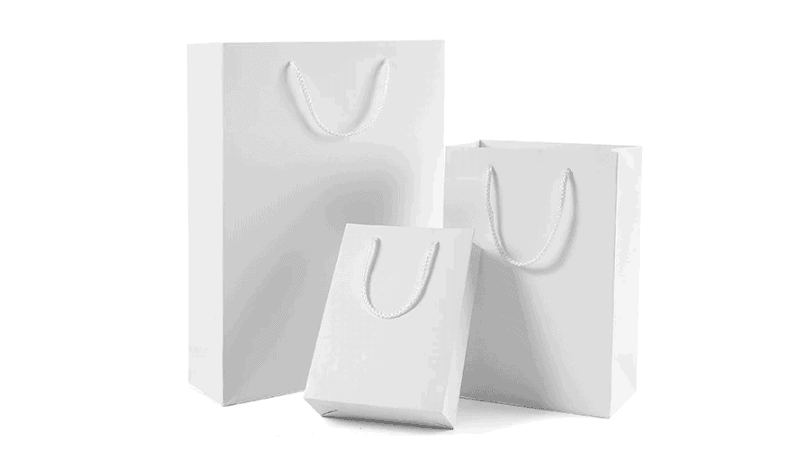
These are processed the same way as kraft paper, but they’re bleached before they’re turned into sheets. Because of the treatments and chemicals used on it, the surface becomes smooth and firm.
This makes it feel more durable than brown-colored bags. Not only that, but this is also reusable. It can be transformed into other useful things.
However, since the color of the bag is white, it’s prone to dirt and smudges. Sometimes, a dirty paper bag is thrown away instead of being reused.
3. Laminated Paper
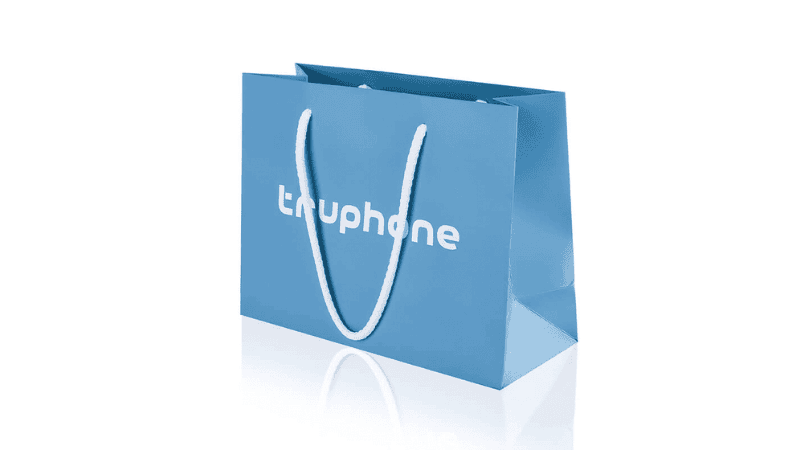
A grocery bag is meant to carry both dry and wet produce. Since paper can easily get damaged by water, how can paper grocery bags be made more sturdy and durable?
This is where coating and lamination come into play. Paper bags can be coated or laminated so that they cover the surface. This will protect it from being destroyed by moisture or water leaks.
It’s also why laminated paper bags are perfect for food orders. Customers won’t have to worry that the bag will break while they carry food items or wet produce.
Of course, it won’t protect the bag from being destroyed when submerged in water. But it’s good enough to carry frozen items.
4. Recycled Paper
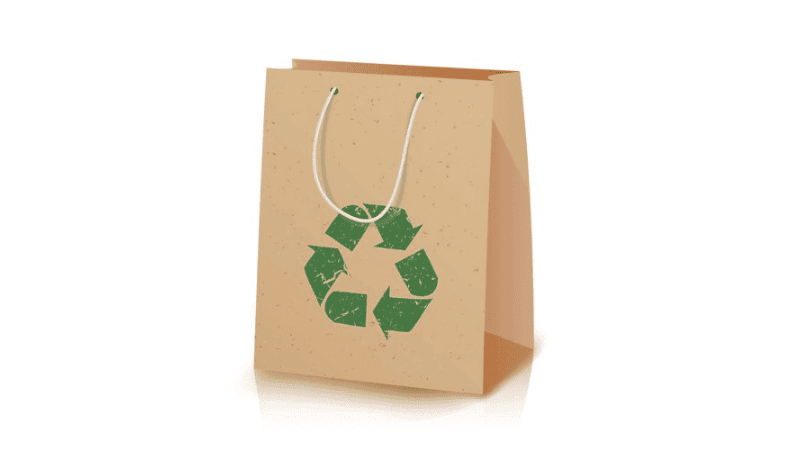
This is a type of paper that’s gaining popularity lately because it’s a sustainable option. Brown paper bags are considered to be eco-friendly. Even the new paper bags have that reputation.
However, business owners can make a greater environmental impact by opting for recycled paper bags.
There are packaging companies that sell grocery bags made of recycled paper. When a paper bag is reusable and recyclable, it’ll help solve the environment’s problem with packaging waste.
Using this material can also improve the reputation of your business. People will come to know you as a sustainable company, and the odds that they’ll stay loyal to you will be greater because of it.
Ready to Get Custom Packaging for Your Business?
start with a low minimum order quantity
7 Considerations When Choosing Grocery Paper Bags
The paper material of a grocery bag is the most important decision that you have to make. For some, the cost of paper is the determining factor in choosing the right material for paper bags.
But that’s not all. There are also technical considerations that’ll help you create the right grocery bag for your business.
For instance, standard brown paper bags that are used to carry lunch have specifications of 5 1/8″ x 3 1/8″ x 10 5/8“ (length x width x height).
But paper grocery bags are bigger because it has to carry a heavier load. Its specifications are 12” x 7” x 17” (width x depth x height), and it can carry 75 pounds of items.
This is only one example of what you need to look into. Here are the others that you have to pay attention to so you can choose their material from a wide selection.
1. Paper Size
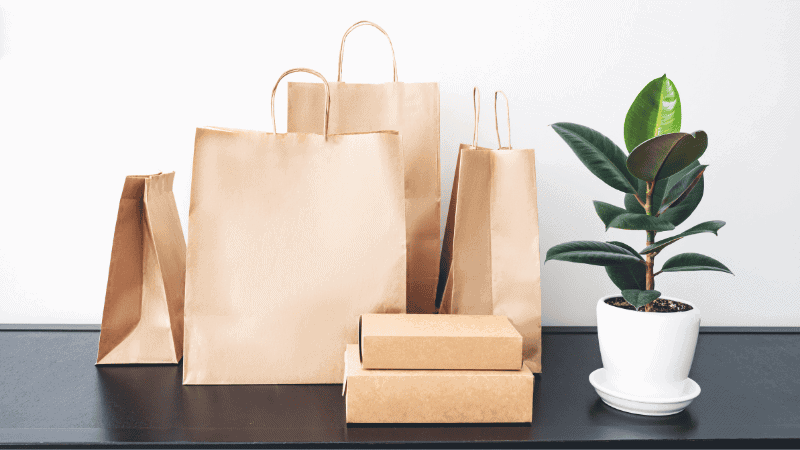
As mentioned, grocery paper bags have to carry a heavier load. Since customers buy different quantities at a time, you need to consider different paper bag capacities. That means creating paper bags in various sizes.
There are a couple of things to consider there.
First, you must realize that the size of products doesn’t dictate their weight. A big paper bag full of chips won’t be as heavy as one half-filled with six cans of peas.
Also, consider the typical weight of products that people carry from groceries. The bag should carry the weight and not break.
What does this mean? Make sure you consider the size and weight capacity of the paper bag.
2. Gusset Measurement
The gusset is the fold that’s found on the side of paper bags. This gives the grocery bag a greater capacity to hold products.
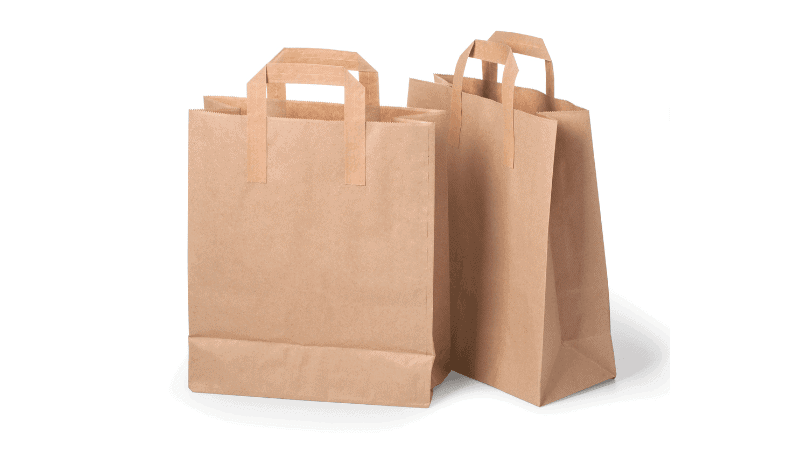
If you have found thick enough paper that can carry heavier loads, you can make the gusset bigger so the paper bags can stretch further.
But if it’s a thinner material, you can make the gusset smaller, so people will be forced to put fewer items inside.
3. Bottom Fold
The bottom of paper bags also affects the capacity that they can carry. There are two types of bottom folds that brown paper grocery bags use.
The first is the flat-bottom bag. In this case, the bottom fold follows the size of the gusset. So if the gusset is 7” when fully stretched, the bottom fold would be the same.
The second is the pinched-bottom bag. It has pointed bottoms that are folded and sealed. These are great for carrying flat items like cards or small products like candies. Paper bags using this bottom fold may or may not have a gusset.
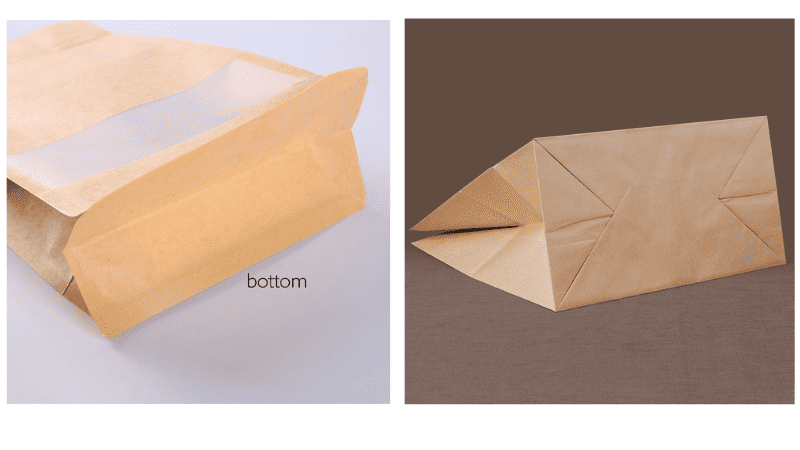
4. Grams Per Square Meter
Another thing that you have to consider is the GSM or grams per square meter of paper bags. This refers to the weight of 1 square meter of paper in grams.
The standard for paper bags is between 35 and 150 GSM. Ideally, the greater the GSM, the thicker the paper, and the greater the weight that a grocery bag can carry. It’ll be more costly, but you’ll find that a lot of manufacturers prefer the thicker paper because it’s easier to die-cut.
5. Bursting Factor
The bursting factor of paper bags measures the material’s strength against pressure before it bursts open. This helps identify how durable bags are. It’ll also help business owners determine how many items customers can cram into the bag before it breaks open.
The BF is typically 14 to 40 BF. But bags with less than 30 BF are acceptable.
Ready to Get Custom Packaging for Your Business?
start with a low minimum order quantity
6. COBB Value
This is the most ignored measurement for paper bags. But in grocery bags, it should be given more importance since they carry items that may contain moisture or condensation, such as fresh produce and chilled products.
COBB testing measures the weight that the material will gain if the paper bags are submerged in water. If the COBB value is lower, the paper bags won’t absorb as much water.
7. MG or MF
MG is machine-glazed, while MF is machine-finished. This involves a process that puts the paper through rollers so one side is smoother with a glazed look. This is great for paper bags that have prints on them.
MG will give paper bags a shiny surface, while MF won’t.
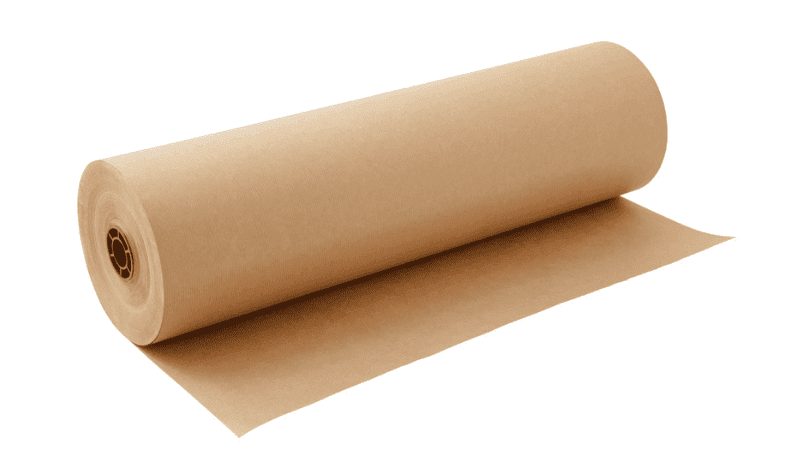
Conclusion
Switching to paper grocery bags is a responsible and sustainable choice for businesses looking to reduce their environmental impact. Whether you opt for brown kraft, white paperboard, laminated, or recycled paper, each material offers unique benefits suited for different needs.
Understanding factors like size, strength, and water resistance will help you choose the right option for your customers.
Know More About Paper Grocery Bags From Packoi
Creating grocery paper bags starts with your choice of material. Do you want brown paper bags? Or do you want recycled kraft paper bags?
The choice is up to you. But before you make a decision, get to know your options first.
If you want more information about paper-based packaging, Packoi Printing has a wide selection of designs and samples for you to choose from.
Give us a call so we can talk about it. We’ll get back to you with a fair quote as soon as possible.


